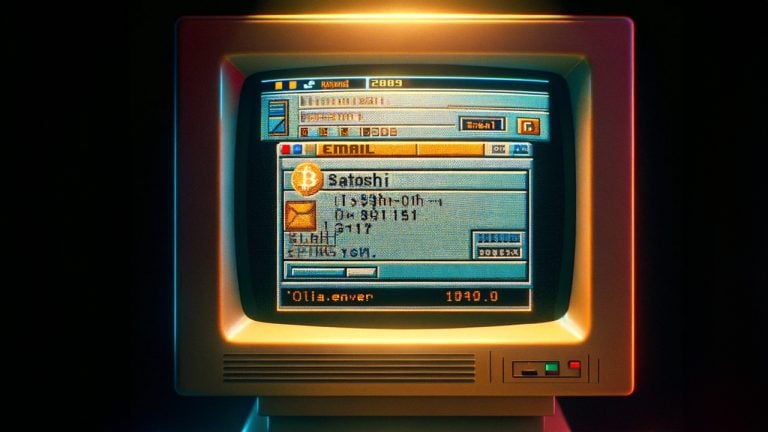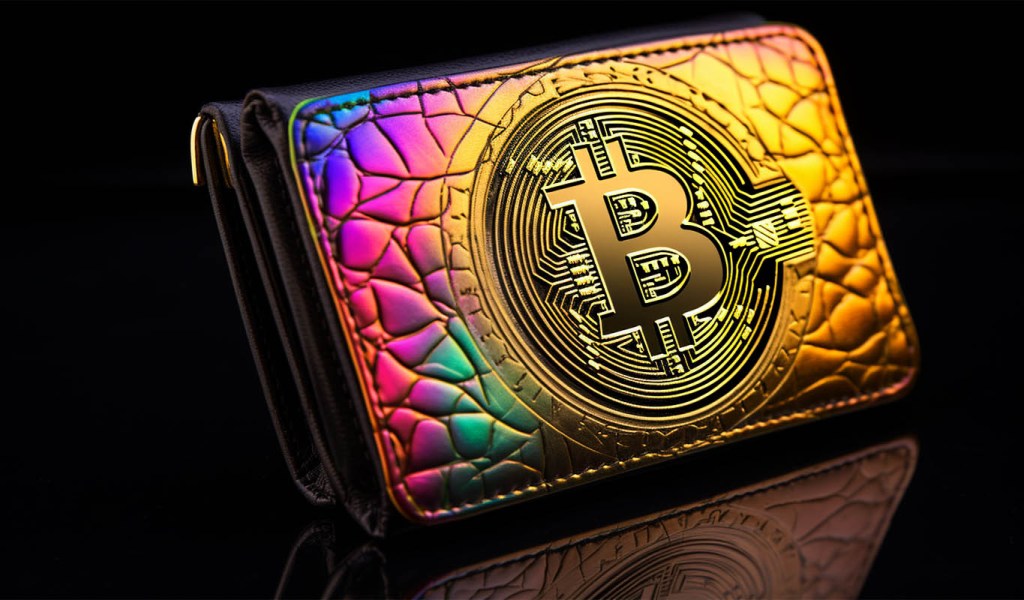 In the unfolding lawsuit between the Crypto Open Patent Alliance (COPA) and Craig Wright, three key witnesses who had early interactions with Bitcoin’s creator, Satoshi Nakamoto, provided their testimonies. Among them were early Bitcoin developers Martti Malmi and Mike Hearn, as well as Adam Back, the creator of Hashcash, the proof-of-work (PoW) algorithm integral to […]
In the unfolding lawsuit between the Crypto Open Patent Alliance (COPA) and Craig Wright, three key witnesses who had early interactions with Bitcoin’s creator, Satoshi Nakamoto, provided their testimonies. Among them were early Bitcoin developers Martti Malmi and Mike Hearn, as well as Adam Back, the creator of Hashcash, the proof-of-work (PoW) algorithm integral to […] In the past seven years, the crypto world has witnessed various individuals claiming to be the true Satoshi Nakamoto, the mastermind behind the Bitcoin white paper and the initiator of the first blockchain. Yet, despite their efforts, none have managed to convince the community of their authenticity as the creators of Bitcoin. It appears there […]
In the past seven years, the crypto world has witnessed various individuals claiming to be the true Satoshi Nakamoto, the mastermind behind the Bitcoin white paper and the initiator of the first blockchain. Yet, despite their efforts, none have managed to convince the community of their authenticity as the creators of Bitcoin. It appears there […] Craig Wright, the Australian computer scientist claiming to be Satoshi Nakamoto, faced a rigorous week-long cross-examination. The proceedings, which unfolded in the U.K. High Court, saw Wright defending his assertion against the Crypto Open Patent Alliance (COPA) and a coalition of Bitcoin developers, raising serious doubts about his narrative. Craig Wright’s Battle to Prove He […]
Craig Wright, the Australian computer scientist claiming to be Satoshi Nakamoto, faced a rigorous week-long cross-examination. The proceedings, which unfolded in the U.K. High Court, saw Wright defending his assertion against the Crypto Open Patent Alliance (COPA) and a coalition of Bitcoin developers, raising serious doubts about his narrative. Craig Wright’s Battle to Prove He […]
One hundred eleven Bitcoin Ordinal inscriptions – each representing the burning of $1 and $100 US bills – have caught the attention of enthusiasts and the Web 3.0 media. All are trying to understand the symbolism behind turning into ashes the equivalent of $10,101 while risking jail and fines, given that it may be illegal […]
The post A Flamethrower to the Fed appeared first on The Daily Hodl.

Crypto veteran Dan Morehead says Bitcoin (BTC) is in a bull market and is laying out a timeline for how long it could last. In a new open letter to investors, Morehead, who oversees $4.2 billion worth of assets at Pantera Capital, says that Bitcoin’s market cycles are nearly “alien” in their similarity. Morehead says […]
The post Pantera Capital’s Dan Morehead Forecasts Bitcoin Bull Market Cycle, Says Current Rally Should Last Till November 2025 appeared first on The Daily Hodl.

During 2023, several Satoshi-era Bitcoin wallets have risen from dormancy to transfer their BTC to a new address.
Three Satoshi-era Bitcoin (BTC) whale addresses that have been dormant since November 2017 transferred 6,500 BTC, worth roughly $230 million, on Nov. 2. Satoshi-era BTC refers to the very early stages of the Bitcoin network when it was still relatively unknown.
According to data from BitInfoCharts, the first wallet moved 2,550 BTC, estimated to be worth $90 million. A second address moved around 2,000 BTC worth $71 million, and the third address transferred around 1,950 BTC worth $69 million.
All three wallets had another thing in common: the last transaction from each came almost six years ago, on Nov. 5, 2017. Thus, these wallets slept through the Bitcoin bull run and the all-time high of over $69,000. Most of the Bitcoin in the three whale wallets dates back to July 2011 and is linked to F2Pool — a Bitcoin mining pool — suggesting it may have been accumulated via early Bitcoin mining. The three wallets held BTC when it traded under $15.
Related: 100%+ BTC price gains? Bitcoin faces ‘massively overvalued’ stocks
Whether all three wallets belong to the same individual or entity is not confirmed, though the wallet history and transaction patterns suggest that could be the case. The recent movement of Bitcoin whale addresses containing Bitcoin from the 2011 era comes just days after the BTC price touched a new yearly high above $35,000.
2023 has seen several Bitcoin whales and addresses more than 10 years old rising from dormancy, transferring BTC to new addresses. Earlier in July, a wallet dormant for 11 years transferred $30 million in BTC, and a month later, in August, a Saotshi-era wallet transferred 1,005 BTC to a new address.
Magazine: The value of a legacy: Hunting down Satoshi’s Bitcoin

The crypto community has asked Elon Musk to remove the X account under the name of Satoshi Nakamoto claiming it is in breach of the platform’s terms of use.
Members of the crypto community have rallied behind a post on X calling for Elon Musk to remove the profile on the platform that has been claiming to be the fabled creator of Bitcoin (BTC) Satoshi Nakamoto.
On Oct. 3 the X profile Pledditor posted saying both the account claiming to be Satoshi Nakamoto and the account with the handle “Bitcoin” should be removed as they are breaching the platform’s terms of service for using "misleading and deceptive" identities.
Hey @ElonMusk, the @Bitcoin and @Satoshi accounts are in breach of your terms of service for using "misleading and deceptive" identities.
— Pledditor (@Pledditor) October 2, 2023
Please remove the checkmarks. pic.twitter.com/BCwFMSOfQJ
Pledditor continued to highlight the areas of the terms and conditions in which they believed the accounts to be violating.
“You can't misappropriate someone else's identity without disclosing you are a parody account. It's no different than making a fake 'Tesla' or 'Elon Musk' account.”
The terms and conditions of the X platform have a specific policy for misleading or deceptive identities, in which it says, “[users] may not misappropriate the identity of individuals, groups, or organizations or use a fake identity to deceive others.”
It defined this as impersonation of someone who already exists, and also deceptive identities which it defines as misleading the public with an identity that isn’t real.
Related: Satoshi Nak-AI-moto: Bitcoin's creator has become an AI chatbot
Aside from the ongoing controversy over the true identity of Satoshi Nakamoto, which has been a subject of discussion in the Bitcoin and crypto community for years, the account has been claimed to be run by an X user named Andy Rowe back in 2018.
On July 2, 2018 Rowe posted saying he curates “quotes” for the Satoshi account.
I curate quotes from Satoshi Nakamoto at @satoshi. AMA!
— Andy Rowe (@andyrowe) July 2, 2018
The account has been quiet since Oct. 31, 2018. However, on Oct. 2 of this year, the account made a new post saying “Bitcoin is a predicate machine” and then going on to explain how it will “explore different aspects of the whitepaper” over the coming months.
Bitcoin is a predicate machine. Over the following months, we shall explore different aspects that were not explicitly contained within the white paper. These aspects are all parts of bitcoin, and are important. Some of these ideas were touched upon in the early years; now is…
— Satoshi Nakamoto (@satoshi) October 2, 2023
Members of the crypto community rallied behind Pledditor’s post calling the account “embarrassing” and that this “needs to happen now.” One user said he previously tried to reach out to administrators about those accounts but was ignored.
Another user called for the accounts to be disabled and likened them to what X did with the account with the handle “@internet.”
Both accounts should be disabled imo, just like they did with @internet.
— . (@m__btc) October 3, 2023
Satoshi’s true identity remains a mystery, with many takers over the years. The most prominent claim of Satoshi’s identity is from Craig Wright.
On July 21, a court in the United Kingdom granted Wright an appeal in the Bitcoin rights lawsuit, in which he claimed copyright to the Bitcoin white paper and database.
Magazine: Wolf Of All Streets worries about a world where Bitcoin hits $1M: Hall of Flame

The decades old ‘NSA created Bitcoin’ theory has again made the rounds on social media, with one Bitcoin advocate adding more weight to his ongoing theory.
Bitcoin advocate Nic Carter has come out to reiterate his support for the theory that the United States National Security Agency (NSA) had something to do with the creation of Bitcoin (BTC).
On Sept. 15, Iris Energy co-founder Daniel Roberts seemingly revived the decade-old theory on X after posting screenshots of a 1996 paper titled: “How to make a mint: The cryptography of anonymous electronic cash.”
The paper is one of the first known discussions of a Bitcoin-like system, which proposes using public-key cryptography to allow users to make anonymous payments without revealing their identity.
The footer notes show the research paper was “prepared by NSA employees.” Sources included cryptography expert Tatsuaki Okamoto who co-invented the Okamoto–Uchiyama public key cryptosystem in 1998.
On Sept. 21, Carter — a partner of Castle Island Ventures partner doubled down his support for the notion stating “I actually do believe this,” before adding:
“I call it the Bitcoin lab leak hypothesis. I think it was a shuttered internal R&D project which one researcher thought was too good to lay fallow on the shelf and chose to secretly release.”
Carter has actually held the theory for several years, proposing back in 2020: “If Bitcoin was written by NSA cryptographers as a monetary bioweapon, if you will, and the code escaped those sensitive confines... does that make it a virus... that escaped from a lab?”
In 2021, he stated: “The only decent thing the NSA ever did from the world was let Bitcoin leak from the lab."
I actually do believe this. I call it the bitcoin lab leak hypothesis. I think it was a shuttered internal R&D project which one researcher thought was too good to lay fallow on the shelf and chose to secretly release https://t.co/qXJkQTciSK
— nic carter (@nic__carter) September 21, 2023
However, he went on to say that this doesn’t imply the U.S. government secretly controls all the Satoshi coins, another theory that often piggybacks on the Bitcoin / NSA conspiracy theory which suggests the NSA created a backdoor to the Bitcoin code.
“In my version of this made-up idea, the researcher did it without permission of the NSA, and chose to leave the coins behind so as to preserve his anonymity.”
“There’s a ton of other circumstantial evidence which supports this [theory],” he added.
Meanwhile, some users drew attention to one of the cryptography academics Tatsuaki Okamoto listed in the 1996 paper, suggesting the name sounds very similar to Satoshi Nakamoto, the pseudonymous creator of Bitcoin.
“The name could have been used as inspiration for satoshi. That’s not really a critical part of the theory though,” Carter said.
Related: This is how Satoshi Nakamoto envisioned crypto working
Meanwhile, director of Intelligence at cyber security firm Krebs Stamos, Matthew Pines, believes it was most likely a “cross-fertilization of NSA crypto nerds and cipher punk nerds,” adding:
“I suspect Satoshi (or at least his/their close intellectual collaborators) has close NSA work associations—but I don’t think Bitcoin itself or the white paper were officially sanctioned.”
Former Goldman Sachs executive Raoul Pal has previously shared his own theory. In an interview with Impact Theory earlier this year he said:
“I think the US government and the UK government invented it ... which is the NSA and the GCHQ in the UK, who are the two world centers of cryptography,”
Cointelegraph’s deep dive into the conspiracy theory in August interviewed former NSA cryptanalyst Jeff Man, who said that while it was “feasible” that the NSA could have created Bitcoin as a means to gather intelligence about its enemies, it is highly doubtful.
However, Man concluded that even if they did, it is likely we’ll never find out the real story behind the world’s most popular digital asset until it doesn't matter anymore.

A long-dormant Bitcoin (BTC) whale has unloaded $29.75 million worth of the top crypto asset after sitting on it for nearly 13 years. The blockchain-tracking platform Whale Alert first spotted the transaction, noting the ancient address sent all 1,005 BTC it owned to another unknown wallet. The whale first received 1,000 Bitcoin all the way […]
The post Satoshi-Era Bitcoin (BTC) Wallet Abruptly Wakes Up After Sitting Dormant for Nearly 13 Years appeared first on The Daily Hodl.

The bot is a ChatGPT model that’s so far only been trained on Satoshi Nakamoto’s public writings and a handful of Bitcoin-related source materials.
Satoshi Nakamoto may have effectively disappeared over 12 years ago, but two artificial intelligence dabblers are seeking to revive the ability to chat with the famed Bitcoin (BTC) creator.
On May 31, Bitcoin FilmFest co-organizer Pierre Corbin and co-developer Hugo Ferrer released “Talk2Satoshi,” an AI chatbot that aims to answer questions about Bitcoin and economics as if they came from Nakamoto.
Announcing my newest project!
— Pierre Corbin (@CierrePorbin) May 31, 2023
Together with @HugoFerrer_, we've spent the last few weeks working on something that has been missing in #bitcoin: the Bitcoin GPT. We call it @talk2satoshi .
Try it out for free: https://t.co/IhWIVAZSsT https://t.co/AFQlb9Dxc9
The model, essentially, is OpenAI’s ChatGPT trained on a limited data set, including Nakamoto’s public emails and forum posts. It also draws from other sources, including Saifedean Ammous’ book The Bitcoin Standard, Jeff Booth’s book The Price of Tomorrow and Corbin’s film The Great Reset and the Rise of Bitcoin, with more sources on the way.
In testing, the chatbot generates responses that are typically uncertain of the future of fiat currencies and hopeful about Bitcoin, although it can provide conflicting answers depending on how it's prompted.
Check out an example:
— Pierre Corbin (@CierrePorbin) May 31, 2023
Here's the answer to "Is our debt sustainable in an inflationary world?":
Where else can you get this kind of answer? pic.twitter.com/euSj6oXqot
For example, when asked a variation of the question “What is the future of Bitcoin?” it generated separate responses saying it was both “promising” and “uncertain.”
The model isn’t trained on the more recent Bitcoin developments, such as the Ordinals protocol or BRC-20 tokens and often generates a response saying it can’t provide an opinion on such topics. Depending on the question, however, it can generate contradicting responses on Ordinals and BRC-20 tokens.

When asked questions regarding Ordinals, it said in one reply that Bitcoin “is not meant to be a platform for storing or transmitting images or other types of data,” while another response called Ordinals “a fascinating and creative application of cryptography.”
Related: Bitcoin fragments could become more valuable than full Bitcoins
According to Corbin, the goal of the bot is to show that AI tools could potentially be used in education.
The model can generate competent responses when asked questions about Bitcoin such as how it works and how its mined, and can explain aspects of the network such as satoshis.
Similar to the real person, the Nakamoto-emulating bot is still shy about revealing its real identity and typically responds:
“My real name is not important. What is important is the decentralization of power that Bitcoin represents and the potential it has to revolutionize financial systems.”
Magazine: ‘Moral responsibility’ — Can blockchain really improve trust in AI?